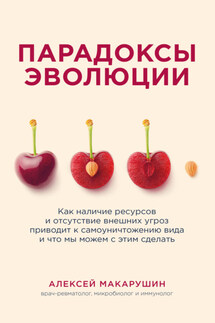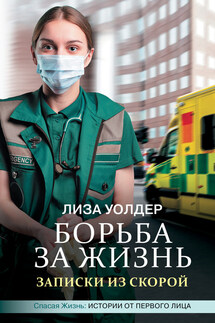Парадоксы эволюции. Как наличие ресурсов и отсутствие внешних угроз приводит к самоуничтожению вида и что мы можем с этим сделать - страница 48
20. Chycki J., Kostrzeva M., Maszczyk A., Zajac A. (2021). Chronic ingestion of rich-bicarbonate water improves anaerobic performance in hypohydrated elite combat sport athletes. Int J of Env Res and Public Health, 18.
21. Nicholls D. G., Bernson V. S., Heaton G. M. (1978). The identification of the component in the inner membrane of brown adipose tissue mitochondria responsible for regulating energy dissipation Experientia Suppl.,Vol. 32., 89–93.
22. Rupprecht A., Sittner D., Smorodchenko A., Hilse K. E., Goyn J., Moldzio R., Seiler E., Anja U., Brauer A. E. M., Pohl E. E., (2014). Uncoupling Protein 2 and 4 Expression Pattern during Stem Cell Differentiation Provides New Insight into Their Putative Function. PLoS ONE 9(2): e88474.
23. Chaudhuri L., Srivastava R. K., Kos F., Shrikant P. A. (2016). Uncoupling protein 2 regulates metabolic reprogramming and fate of antigen-stimulated CD8+ T cells, Cancer Immunol Immunother. 65 (7): 869–874.
24. Echtay K. S., Winkler E., Bienengraeber M., Klingenberg M. (2000). Site-directed mutagenesis identifies residues in uncoupling protein (UCP1) involved in three different functions. Biochemistry; 39: 3311–3317.
25. Dietrich M. O., Andrews Z. B., Horvath T. L. (2008). Exercise-Induced Synaptogenesis in the Hippocampus Is Dependent on UCP2-Regulated Mitochondrial Adaptation. Journal of Neuroscience 15 October, 28 (42): 10766–10771.
26. Raschke S., Elsen M., Gassenhuber H., Sommerfeld M., Schwahn U., Brockmann B., Jung R., Wisløff U., Tjønna A. E., Raastad T., Hallén J., Norheim F., Drevon C. A., Romacho T., Eckardt K., Eckel J. (2013). Evidence against a Beneficial Effect of Irisin in Humans//PLoS ONE. – September 11 (Vol. 8, № 9), e73680.
27. Raichlen D. A., Klimentidis, Y. C., Bharadwaj, P. K., Alexander G. E. (2019). Differential Associations of engagement in physical activity and estimated cardiorespiratory fitness with brain volume in middle-aged to older adults in Brain Imaging and Behavior.
28. Raichlen D. A., Alexander G. E. (2017). Adaptive capacity: an evolutionary neuroscience model linking exercise, cognition, and brain health. Trends in Neurosciences, Vol. 40, № 7, 408–421.
29. Clark A., Mach N. (2016). Exercise-induced stress behavior, gut microbiota-brain axis and diet: a systematic review for athletes. Journal of the International Society of Sports Nutrition, 13–43.
30. Zeppa S. D., Agostini D., Gervasi M., Annibalini G., Amatori S., Ferrini F., Sisti D., Piccoli G., Barbieri E., Sestili P., Stocchi V. (2020). Mutual Interactions among Exercise, Sport Supplements and Microbiota. Nutrients 2020, 12, 17.
31. Oettlé G. J. (1991). Effect of moderate exercise on bowel habit. Gut, 32, 941–944.
32. Hagio M., Matsumoto M., Yajima T., Hara H., Ishizuka S. (1985). Voluntary wheel running exercise and dietary lactose concomitantly reduce proportion of secondary bile acids in rat feces. J. Appl. Physiol., 109, 663–668.
33. Cerda B., Perez M., Perez-Santiago J. D., Tornero-Aguilera J. F., Gonzalez-Soltero R., Larrosa M. (2016). GutMicrobiota Modification: Another Piece in the Puzzle of the Benefits of Physical Exercise in Health, Front. Physiol., 7, 51.
34. Francaux M. (2009). Toll-like receptor signalling induced by endurance exercise. Appl. Physiol. Nutr. Metab., 34, 454–458.
35. Frosali S., Pagliari D., Gambassi G., Landolfi R., Pandolfi F., Cianci R. (2015). How the Intricate Interactionamong Toll-Like Receptors, Microbiota, and Intestinal Immunity Can Influence Gastrointestinal Pathology. J. Immunol. Res., 2015, 489821.








